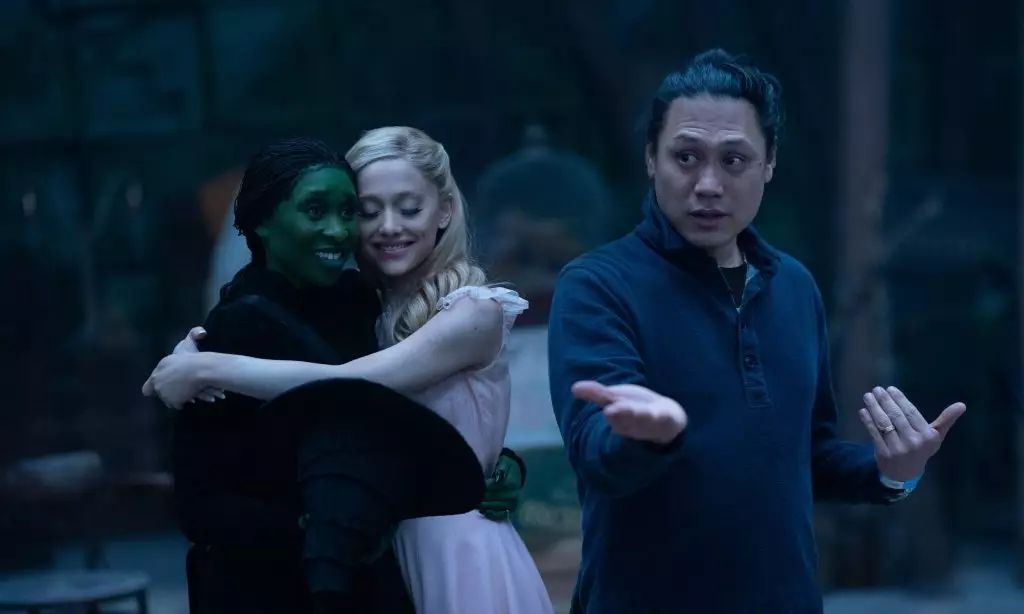The release of Jon M. Chu’s film adaptation of the Broadway musical “Wicked” has reignited conversations about visual storytelling in movies, particularly regarding its color grading and overall aesthetic as compared to the iconic 1939 classic, “The Wizard of Oz.” As fans and critics scrutinize the film’s visual palette, Chu has offered insights into how he crafted an immersive experience that prioritizes realism over nostalgia. This article delves into Chu’s intentions and the responses elicited from audiences, exploring the complexities surrounding contemporary interpretations of a beloved story.
Chu’s decision to adopt a pink and green color scheme has drawn mixed reactions. Some viewers have characterized the film as “desaturated,” drawing comparisons to the technicolor extravaganza of “The Wizard of Oz.” In a recent interview with The Globe and Mail, Chu countered these critiques by asserting that the color choices were deliberate, aimed at crafting a believable world rather than replicating the fantastical vibrancy of previous adaptations. Chu explained his aspiration to ground Oz in a way that emphasizes the characters’ personal journeys. According to him, if the setting felt too dreamlike or artificial, the emotional weight of Elphaba and Glinda’s experiences would be diminished.
Chu’s commitment to realism reflects an evolving approach to cinematic storytelling, where the portrayal of fantastical worlds must also resonate with authenticity. His vision of Oz encompasses not merely a picturesque backdrop but an environment that impacts the narrative. “I want to feel the dirt,” Chu stated, hinting at a desire for the audience to connect with the landscape and its significance to the characters’ development. The intention was clear: to present Oz as a tangible, lived-in world rather than a mere spectacle.
Since the film’s premiere, discourse about its visual style has spilled over into online platforms, showcasing a wide range of opinions. While some viewers criticized the “drab” coloring and backlighting, other fans defended the aesthetic choices as a fresh take on a timeless story. The debate underscores a clash between traditional expectations and progressive interpretations in modern cinema. Indeed, the changing landscape of film technology has made it increasingly challenging to adopt the same vivid visuals that technicolor once provided.
Moreover, critics have pointed to the fact that technicolor itself is a technique that has largely fallen out of fashion, leading to a visual landscape that feels distinctly different from classic films. The reluctance to lean on nostalgia highlights a more significant trend in filmmaking—an emphasis on innovation over imitation. By reducing the vibrancy commonly associated with stories of magic and wonder, Chu allows the poignancy of the narrative to take precedence over flashy visuals.
Despite the mixed reactions regarding the film’s color grading, “Wicked” has enjoyed overwhelming commercial success since its release. With the film breaking multiple box office records, including achieving the highest global and domestic opening for a film based on a Broadway adaptation, it’s evident that audiences are still drawn to the story’s rich themes and characters. The film has also made history with the largest global opening for a non-sequel film this year, suggesting that the productive relationship between audience expectations and innovative storytelling can yield substantial rewards.
Part One of this adaptation, which explores the complex relationship between Elphaba and Glinda, resonates deeply, allowing viewers to witness the characters’ evolving dynamics against a backdrop that feels both fresh and familiar. Esteemed actors such as Ariana Grande and Cynthia Erivo breathe life into these iconic roles, drawing audiences into their emotional trajectories.
Through the challenges of rendering the fantastical milieu of Oz, Jon M. Chu succeeds not just in delivering a commercially viable product but in elevating the narrative’s intrinsic themes. By carefully balancing visual innovation with character depth, “Wicked” invites viewers to not only witness the story unfold but to engage with the complexities of its central relationships, ultimately creating a rich tapestry that honors its source material while establishing its own identity.


Leave a Reply